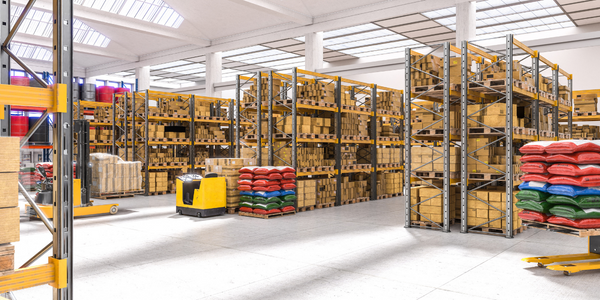Technology Category
- Functional Applications - Inventory Management Systems
- Sensors - Level Sensors
Applicable Functions
- Logistics & Transportation
- Warehouse & Inventory Management
Use Cases
- Inventory Management
- Picking, Sorting & Positioning
Services
- System Integration
- Training
About The Customer
Green Beacon Brewing is a proud Queensland brewery and Brewpub that believes in the journey of innovation. The company's mission is to create enjoyment while inspiring passion and loyalty. Quality, integrity, flavour, balance, and consistency are at the forefront of its operations. Green Beacon Brewing manufactures beer from two sites in Brisbane and distributes it throughout Australia. In 2019, the company was acquired by Asahi Group Holdings, a Japanese global beer, spirits, and soft drinks company. Despite the acquisition, the team continues to manage production with Fishbowl and SalesIn.
The Challenge
Green Beacon Brewing, a Queensland brewery and Brewpub, was facing significant challenges in managing its production, inventory, sales, and distribution across two manufacturing sites in Brisbane. The company was unable to accurately track its raw materials, leading to frequent over-ordering. The locations of finished goods were not clearly identified, and the costing of inventory was largely based on guesswork. Furthermore, distribution was a manual process heavily reliant on paper trails, making it inefficient and prone to errors. The company was in dire need of an inventory system that could address these issues and streamline its operations.
The Solution
Green Beacon Brewing turned to Fishbowl for a solution to its inventory management problems. The key factors that led to the selection of Fishbowl were its ease of use, suitability for the company's production methods, integration with the existing accounting system, local support, training, and cost. Fishbowl's solution enabled Green Beacon Brewing to streamline all of its processes, from production to sales and distribution. The system provided a clear view of the level of raw materials, preventing over-ordering. It also made the locations of finished goods evident and provided accurate costing of inventory. The manual, paper-based distribution process was replaced with a more efficient, automated system.
Operational Impact
Quantitative Benefit

Case Study missing?
Start adding your own!
Register with your work email and create a new case study profile for your business.
Related Case Studies.

Case Study
Hospital Inventory Management
The hospital supply chain team is responsible for ensuring that the right medical supplies are readily available to clinicians when and where needed, and to do so in the most efficient manner possible. However, many of the systems and processes in use at the cancer center for supply chain management were not best suited to support these goals. Barcoding technology, a commonly used method for inventory management of medical supplies, is labor intensive, time consuming, does not provide real-time visibility into inventory levels and can be prone to error. Consequently, the lack of accurate and real-time visibility into inventory levels across multiple supply rooms in multiple hospital facilities creates additional inefficiency in the system causing over-ordering, hoarding, and wasted supplies. Other sources of waste and cost were also identified as candidates for improvement. Existing systems and processes did not provide adequate security for high-cost inventory within the hospital, which was another driver of cost. A lack of visibility into expiration dates for supplies resulted in supplies being wasted due to past expiry dates. Storage of supplies was also a key consideration given the location of the cancer center’s facilities in a dense urban setting, where space is always at a premium. In order to address the challenges outlined above, the hospital sought a solution that would provide real-time inventory information with high levels of accuracy, reduce the level of manual effort required and enable data driven decision making to ensure that the right supplies were readily available to clinicians in the right location at the right time.

Case Study
DHL Supply Chain Growing Use of AR Glasses
A picker with an RF scanner is constantly looking at the gun to get pick commands, hitting the confirm button and doing things in sequential fashion which is time consuming. Warehouse operations costs add up to 20% of the total logistics costs for DHL.

Case Study
Hardware Retailer Uses Data Warehouse to Track Inventory
Ace tracked which products retailers ordered, when they were ordered and shipped. However, the company could not track or forecast actual sales. Data used for reporting was up to a one-week old, owing to performance and data cleansing issues. Requirement to integrate wholesale and inventory data with POS data to help drive key business decisions, improve category management, lower inventory costs and optimize pricing. Reliance on custom coding to integrate POS data was excessively resource intensive and led to major performance constraints.

Case Study
Remake Enterprise-to-production System
The client was running a legacy material flow tracking system and wanted to replace the system with a more effective one as the system was increasingly expensive to maintain and support and also was not extendable. The client's IT landscape was filled with modern applications and it was difficult to interface the material flow tracking system with modern applications.









